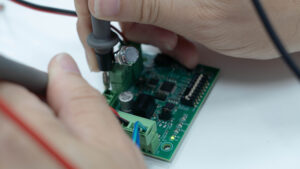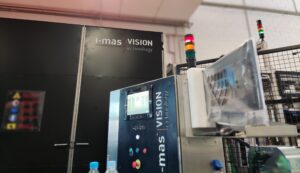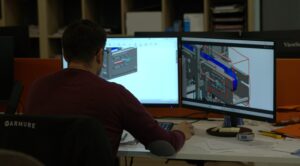Humanoid robotics has advanced significantly in recent years, and their integration into industrial environments is beginning to become a reality. As technology advances, humanoid robots are proving to be a valuable tool in factories and production plants. However, their implementation poses both opportunities and challenges that must be addressed to maximize their effectiveness in industry.
Opportunities for humanoid robots in industry
The introduction of humanoid robots in industry is transforming the way multiple tasks are performed. Their ability to adapt to multiple functions without requiring major modifications to the work environment makes them a highly flexible option. Unlike traditional industrial robots, which are typically designed to perform a single task in a repetitive manner, humanoids can take on different roles and adjust to new needs more easily.
Another important advantage is their ability to collaborate with workers. Thanks to advances in artificial intelligence and detection sensors, these robots can share workspaces with operators without compromising safety. In this way, they facilitate the execution of heavy or repetitive tasks, helping to reduce fatigue and the risk of injury among employees.
Moreover, their implementation in industrial sectors can significantly reduce occupational hazards. In hazardous tasks, such as handling chemicals or operating in extreme temperature environments, humanoid robots can take a leading role, protecting workers and ensuring safer production.
On the other hand, its ability to operate without interruptions and with a minimum margin of error allows for increased efficiency and productivity in assembly and manufacturing lines, ensuring higher quality standards and optimized production times.
Challenges of implementing humanoid robots.
Despite the advantages they offer, the implementation of humanoid robots in industrial environments faces several challenges:
- High development and implementation costs: Humanoid robot technology remains expensive, both in terms of acquisition and maintenance. Many companies still cannot justify the investment against other, cheaper forms of automation.
- Complex interface and programming: Although advances have been made in ease of programming, humanoid robots still require advanced configurations and trained personnel for efficient implementation.
- Integration with existing systems: Many industrial plants have been designed around specific processes and traditional machinery. The introduction of humanoid robots requires careful integration so as not to affect existing operations.
- Worker acceptance: The introduction of robots into work environments often generates resistance, as there is a fear that they will replace human jobs. It is essential that companies implement strategies to facilitate coexistence between workers and robots.
Success stories and the future of humanoid robotics in industry
Currently, leading technology companies, such as Tesla, Boston Dynamics and Hanson Robotics, have been developing humanoid robots with advanced capabilities. Some models, such as Tesla Optimus and Boston Dynamics’ Atlas, have already demonstrated their potential in assembly and logistics tasks.
Therefore, we can say that the future of humanoid robots in industry will depend on the evolution of artificial intelligence, cost reduction and acceptance by companies. As these factors improve, humanoid robots are expected to become increasingly common in factories and production environments.
In the engineering department of i-mas we are specialized in the combination of artificial vision technologies, deep learning and industrial automation in production processes, which allows us to offer integral solutions adapted to the specific needs of each client.
Want to learn more about our services? Contact us or visit our projects section!



